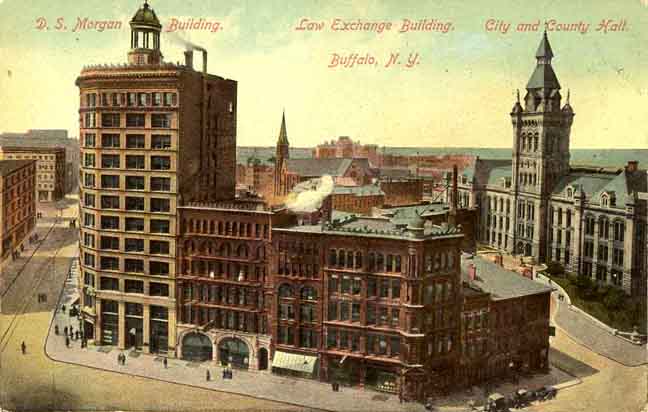|
|
D.
S. Morgan Building |

|
The Business District of Downtown Buffalo Buffalo Architecture: A Guide, by Francis R. Kowsky, et. al. Cambridge: MIT Press, 1981, pp. 44-45, 71 It was not until the post-Civil War era that Buffalo developed a specialized central business district, or downtown, as we know it today. Many forces, including a rapidly expanding and increasingly complex economy, contributed to this development, The city's population grew from 155,000 in 1880 to 256,000 in 1890. This growth, combined with the introduction of the electric streetcar system in the late 1880s, enabled downtown to emerge as the focal point of a metropolitan region, by encouraging residential decentralization while allowing people from all over the city to travel downtown for the price of a nickel. Thousands did, and the changes in land use which which followed were unprecedented. One result was that the office tower replaced the church steeple as the symbol of downtown by the early twentieth century. The Dun Building (1894-1895) and the D. S. Morgan Building (1895-1896) towered over their mid-nineteenth-century neighbors on Pearl Street. Nearby, the Shelton Square area became the center for business headquarters as the Erie County Savings Bank (1890-1893), Prudential (Guaranty) Building (1895-1896), and the Ellicott Square Building (1895-1896) were constructed. In the process, the remnants of an earlier era, including homes, churches, and small office blocks, were demolished. |
Page by Chuck LaChiusa
in 2014
| ...Home Page
...| ..Buffalo
Architecture Index...| ..Buffalo History Index...
.|....E-Mail ...| .